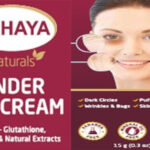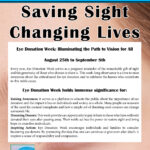Eye care should be a public health priority in India. Blindness is known to increase rapidly after the age of 50 in India. India may be home to nearly half of the world’s micronutrient deficient people.


The world’s largest population of people with blindness live in India. Over 8 million people, to be exact. The majority of them lack access to even the most basic medical facilities because they reside in the country’s most underdeveloped regions. Did you know that if they had received prompt treatment, over half of them might not have been blind? But poverty, which both causes and results in blindness, can be extremely difficult to escape, especially in rural areas where the majority of blind people reside.
Cataract and refractive errors are typically discovered to be the main reasons for blindness in India. With prompt measures, both causes are simply treatable. A pair of glasses can correct refractive error, while a small surgery can cure cataract. However, due to a lack of knowledge and access to basic infrastructure that can address these issues, millions of Indians go blind. Even though blindness is not life-threatening, it greatly contributes to poverty. A person becomes more susceptible to losing possibilities after going blind, including access to employment, education, financial independence, and eventually respect or recognition in the society. A non-sighted person only has to endure these challenges as a result of delayed medical attention.
We saw how the COVID-19 pandemic worsened the eye health situation significantly. Subsequent lockdowns resulted in significant changes in lifestyle, including stress and poor eye health. Due to the inability to obtain regular eye exams as a result of the pandemic, children and adults were experiencing inaccurate or suboptimal correction of refractive errors, which means they were wearing the same pair of glasses even though the power of the glasses has changed. There was a shortage of medicines in the market, causing people to miss out on their medication. This also led to an increase in the use of home remedies, which could have serious consequences for eye-related issues such as glaucoma, diabetic retinopathy, and so on
The eye health problem is especially prevalent among marginalised communities such as tribal, schedule castes, minorities, and women in these communities. According to some estimates, nearly 70% of blind people live in Uttar Pradesh, Madhya Pradesh, Chhattisgarh, Rajasthan, Bihar, Jharkhand, West Bengal, and Odisha, which are all economically backward states. Only community ownership and empowerment can result in long-lasting reforms. Panchayats, neighbourhood self-help organisations, and community volunteers working together will actively raise awareness of the value of eye health and the resources that are available in the area, resulting in a long-lasting shift in how the community approaches seeking eye health. The establishment of an environment that encourages participation from all stakeholders is essential for a sustainable, high-impact intervention.


RN Mohanty
CEO Sightsavers India











